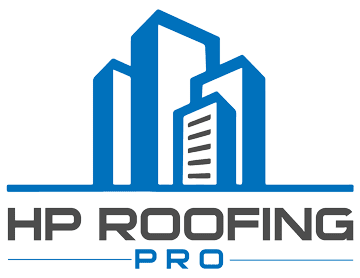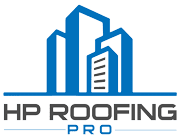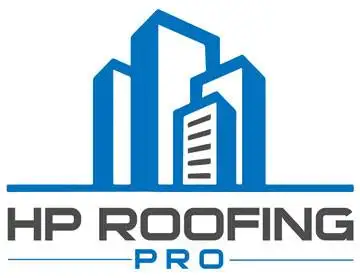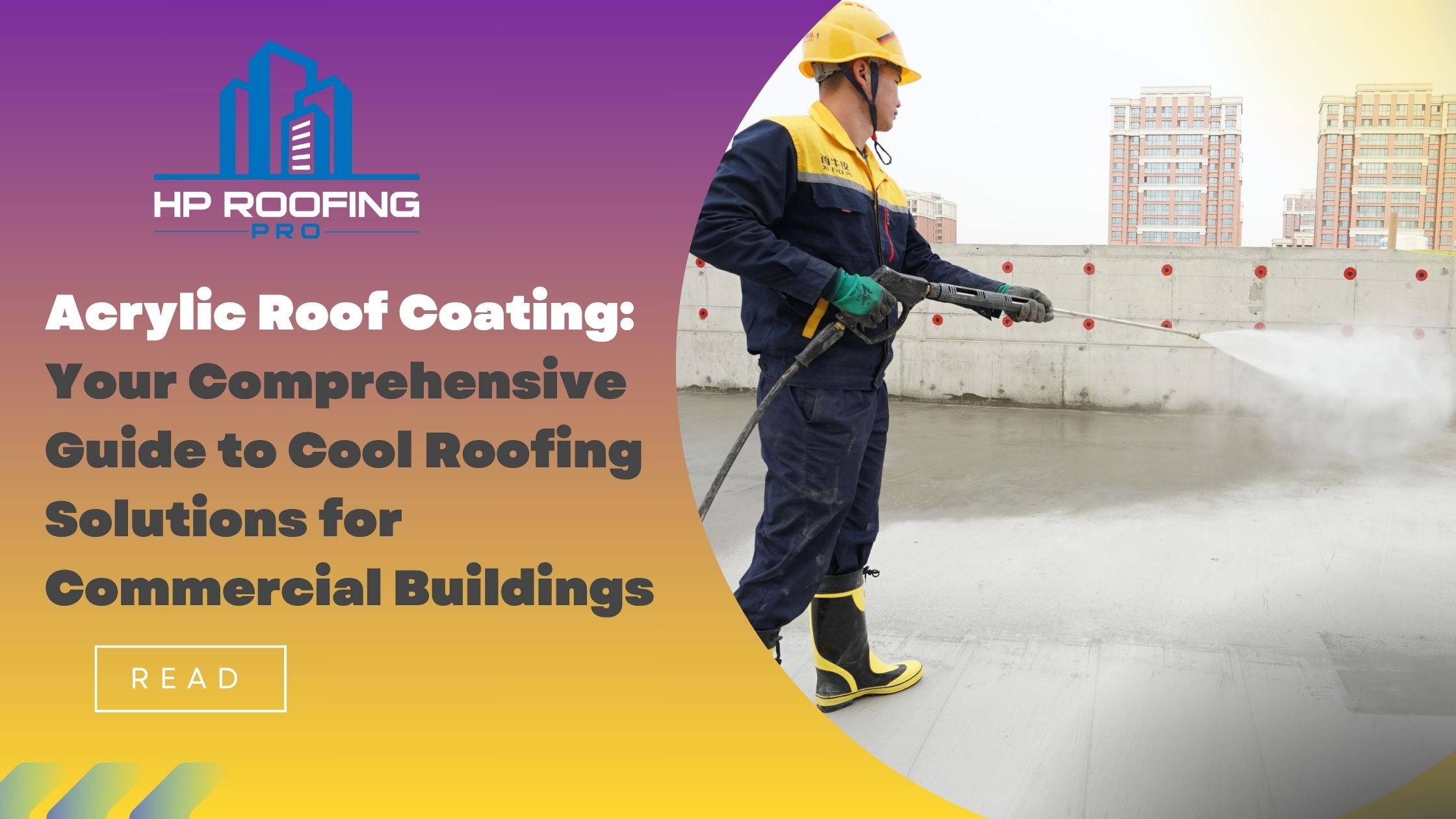Mon - Fri 7:00 am - 4:30 pm
601 South Palm Ave, Alhambra, CA 91803
Posted by hproofingpro No Comments on Acrylic Roof Coating: Your Comprehensive Guide to Cool Roofing Solutions for Commercial Buildings Roofing, seamless roofing
Acrylic Roof Coating: Your Comprehensive Guide to Cool Roofing Solutions for Commercial Buildings
As a building owner or manager, maintaining your commercial property’s roof is crucial for protecting your investment, ensuring occupant comfort, and controlling operational costs. With rising energy prices and an increasing focus on sustainability, many are turning to innovative solutions, such as acrylic roof coatings. These coatings not only extend the life of existing roofs but also transform them into “cool roofs” that reflect sunlight and reduce heat buildup. In this guide, we’ll explore everything you need to know about acrylic roof coatings and their role in cool roofing systems. Whether you’re researching “acrylic roof coating benefits for commercial buildings” or wondering “how cool roofing reduces energy costs,” we’ve got you covered with expert insights, practical advice, and answers to common concerns.
What is Acrylic Roof Coating?
Acrylic roof coating is a water-based, elastomeric (rubber-like) material applied as a liquid to form a seamless, protective layer over your existing roof. Made primarily from acrylic polymers, these coatings are designed to expand and contract in response to temperature changes, thereby preventing cracks and leaks. Unlike traditional roof replacements, acrylic coatings are applied directly to surfaces such as metal, modified bitumen, single-ply membranes, or built-up roofs, making them a versatile option for commercial properties.
What sets acrylic coatings apart is their high reflectivity—often achieving up to 87% solar reflectance. This means they bounce back a significant portion of the sun’s rays, keeping the roof surface cooler by as much as 50°F compared to conventional dark roofs. They’re also UV-resistant, which helps shield the underlying roof from degradation caused by sunlight exposure.
For building managers dealing with aging roofs, acrylic coatings offer a non-disruptive upgrade. They’re easy to apply with rollers or sprayers, and because they’re water-based, cleanup is straightforward with just soap and water. However, they’re best suited for roofs with positive slope or good drainage, as standing water can compromise their performance over time.
How Acrylic Coatings Contribute to Cool Roofing Solutions
Cool roofing refers to systems that minimize heat absorption by reflecting sunlight and emitting absorbed heat back into the atmosphere. Acrylic coatings excel in this area, qualifying as cool roof materials under standards set by organizations such as the Cool Roof Rating Council (CRRC). Their bright white or light-colored finish boosts solar reflectance and thermal emittance, reducing the urban heat island effect in densely populated areas.
In practical terms, this translates to cooler indoor environments without over-relying on air conditioning. For instance, in hot climates, cool roofs can significantly lower roof temperatures, easing the load on HVAC systems and improving overall building efficiency. Acrylic’s role here is key: as a field-applied coating, it can retrofit existing roofs, turning them into energy-saving assets without a complete tear-off.
If you’re a building owner in a sunny region, you might be asking, “How do cool roofing solutions with acrylic coatings impact my utility bills?” Studies show potential energy savings of up to 30% on cooling costs, depending on factors like building insulation and local climate. In colder areas, however, the reduced heat absorption could slightly increase heating needs, so it’s worth evaluating your specific location.
Key Benefits of Acrylic Roof Coatings for Commercial Properties
Acrylic roof coatings provide a range of advantages that address common pain points for building owners and managers. Here’s a breakdown:
Energy Savings and Efficiency
By reflecting UV rays, acrylic coatings can reduce peak electricity demand and lower air conditioning usage. Real-world applications in commercial warehouses and offices have demonstrated HVAC cost reductions of 20-30%, with some reports citing up to 87% solar reflectance, resulting in cooler interiors. 1 This not only cuts bills but also qualifies properties for rebates from programs like ENERGY STAR.
Cost-Effective Roof Restoration
Replacing a commercial roof can be expensive and disruptive. Acrylic coatings cost 50-70% less than a complete replacement while extending roof life by 10-20 years. For managers overseeing budgets, this means minimal downtime—applications often take just days—and long-term savings on maintenance.
Durability and Protection
These coatings form a waterproof barrier that resists weathering, hail, and foot traffic. They’re particularly effective in humid environments, offering mildew resistance and UV protection that prevents premature roof failure.
Environmental and Health Benefits
Cool roofs with acrylic coatings help mitigate urban heat islands, improve air quality by reducing smog formation, and lower carbon emissions from power plants. For occupants, cooler buildings mean better comfort, especially in non-air-conditioned spaces like storage areas.
In applications like retail centers or industrial facilities, owners have reported not just financial gains but also enhanced property value and tenant satisfaction.
The Installation Process: What to Expect
Installing acrylic roof coatings requires professional expertise to ensure longevity. Here’s a step-by-step overview:
- Inspection and Preparation: A specialist assesses the roof for damage, slope, and compatibility. Any leaks or weak areas are repaired, and the surface is pressure-washed to remove dirt and debris.
- Priming (If Needed): Some substrates require a primer for better adhesion.
- Application: The coating is applied in multiple layers, typically 20-30 mils thick per coat, allowing for drying time between applications. Temperatures must be above 50°F for proper curing.
- Final Inspection: Walk-throughs confirm even coverage and reflectivity.
For best results, hire certified contractors like those at HP Roofing PRO. Visit our roof coating services page for more details.
Maintenance and Longevity of Acrylic Roof Coatings
One common concern is, “How do I maintain an acrylic-coated roof?” Fortunately, it’s low-maintenance. Regular inspections, conducted every 6-12 months, catch issues early. Clean with mild soap and water to preserve reflectivity—avoid harsh chemicals. In humid areas, watch for algae, which can be treated with biocides.
Expect 10-15 years of service before recoating, although factors such as climate and foot traffic may influence this timeframe. Recoating is simple and costs a fraction of initial application.
Pros and Cons: Is Acrylic Right for Your Building?
Like any solution, acrylic coatings have strengths and limitations:
| Pros | Cons |
|---|---|
| Affordable and easy to install | Not ideal for flat roofs with ponding water |
| High UV reflectivity for energy savings | May lose thickness over time due to weathering |
| Dirt-resistant and low-VOC | Application limited in cold weather (below 50°F) |
| Extends roof life cost-effectively | Requires reapplication sooner than some alternatives like silicone |
If your building experiences heavy rainfall or poor drainage, consider alternatives; otherwise, acrylic’s balance of performance and price is hard to beat.
Common Questions and Concerns About Acrylic Roof Coatings
Building owners and managers often have similar queries. Here are answers based on real-world insights:
How much does acrylic roof coating cost for a commercial building?
Costs vary by size and condition but are typically 50-70% less than replacement. Factors include labor and materials—expect $1-3 per square foot.
Is acrylic better than silicone for cool roofing?
Acrylic is more affordable and reflective but less resistant to ponding water. Silicone lasts longer in wet conditions but attracts dirt and costs more. Choose based on your roof’s needs.
Can acrylic coatings be applied over any roof type?
They’re compatible with most, like metal or asphalt, but not ideal for severely damaged or ponding-prone roofs.
Do cool roofs with acrylic coatings work in all climates?
Best in hot, sunny areas for maximum savings. In cold climates, they might increase heating costs slightly.
How long before I see energy savings?
Savings start immediately, with noticeable reductions in cooling bills within the first summer.
For personalized answers, schedule a consultation via our contact page.
When to Choose Acrylic Roof Coatings Over Other Options
If your commercial roof is in decent shape but showing signs of wear, and you’re in a moderate climate with good drainage, acrylic is an excellent choice for energy-efficient upgrades. It’s ideal for those searching “best cool roofing solutions for reducing HVAC costs” or “affordable roof restoration for commercial properties.”
In conclusion, acrylic roof coatings provide an innovative and sustainable solution to enhance your building’s performance. They address key concerns, such as energy efficiency and longevity, while providing real value. At HP Roofing PRO, we’re here to help you navigate these options. Explore our commercial roofing services or reach out for a free assessment today.
Recent Posts
Categories
Recent Posts
Do you have any questions?
Contact us at The HP Roofing PRO office or submit a business inquiry online
Contact Us






